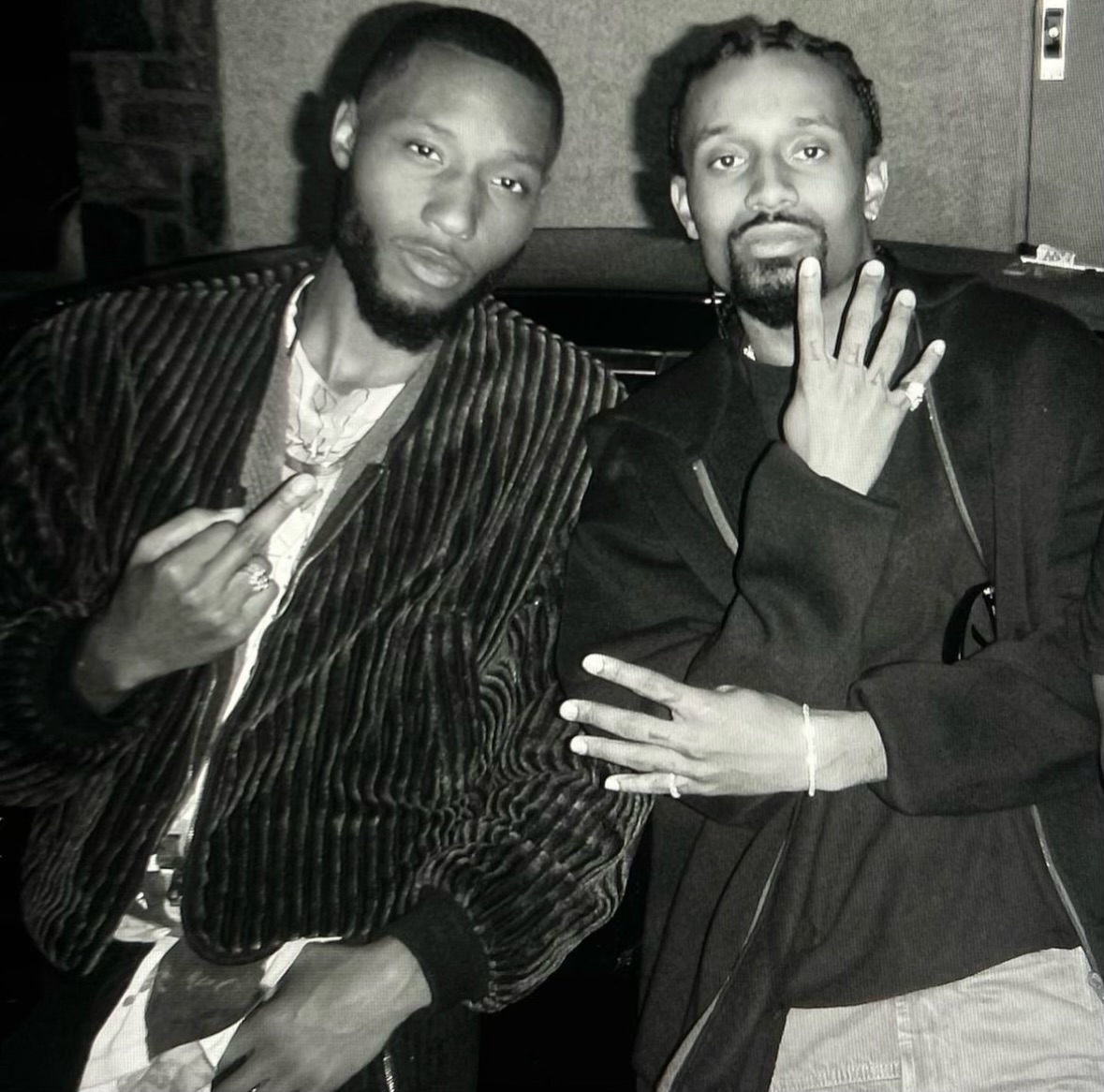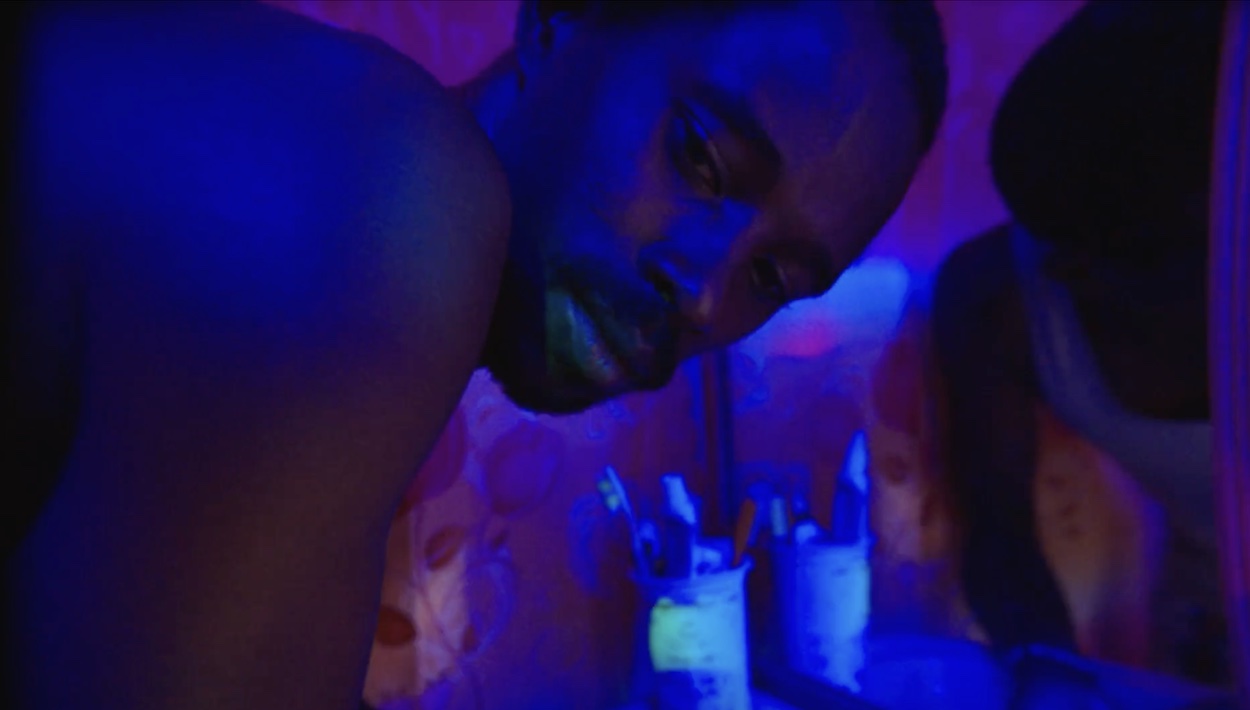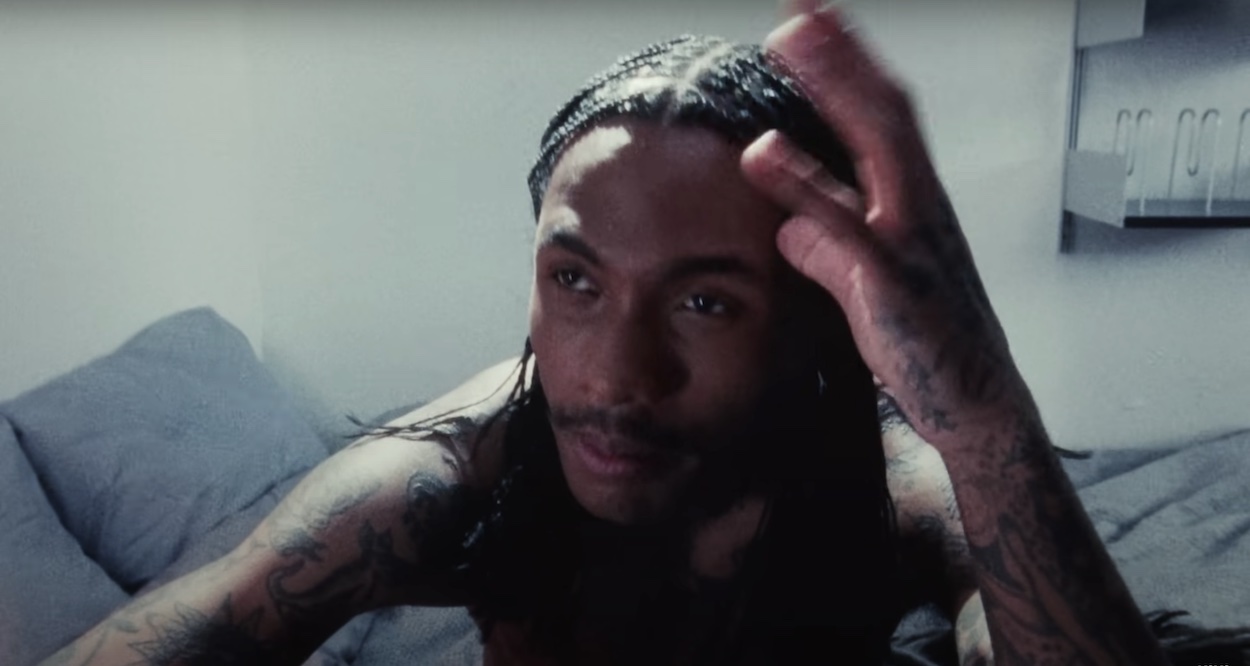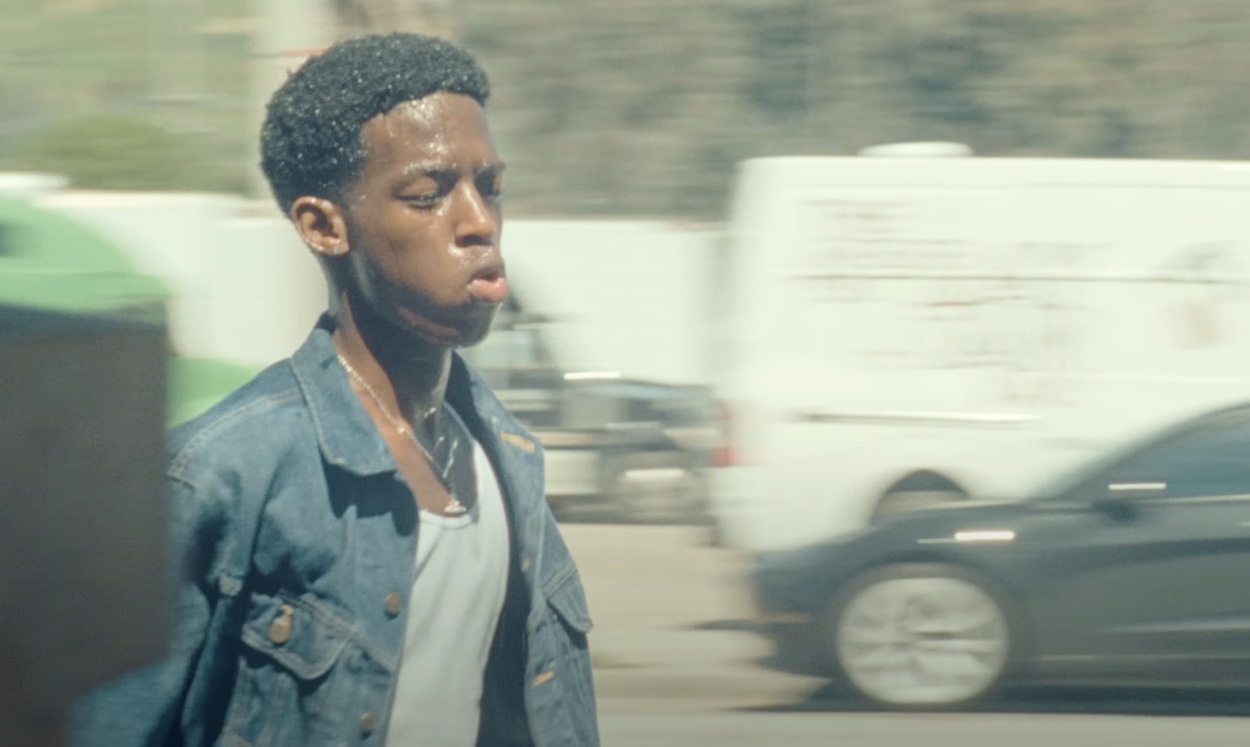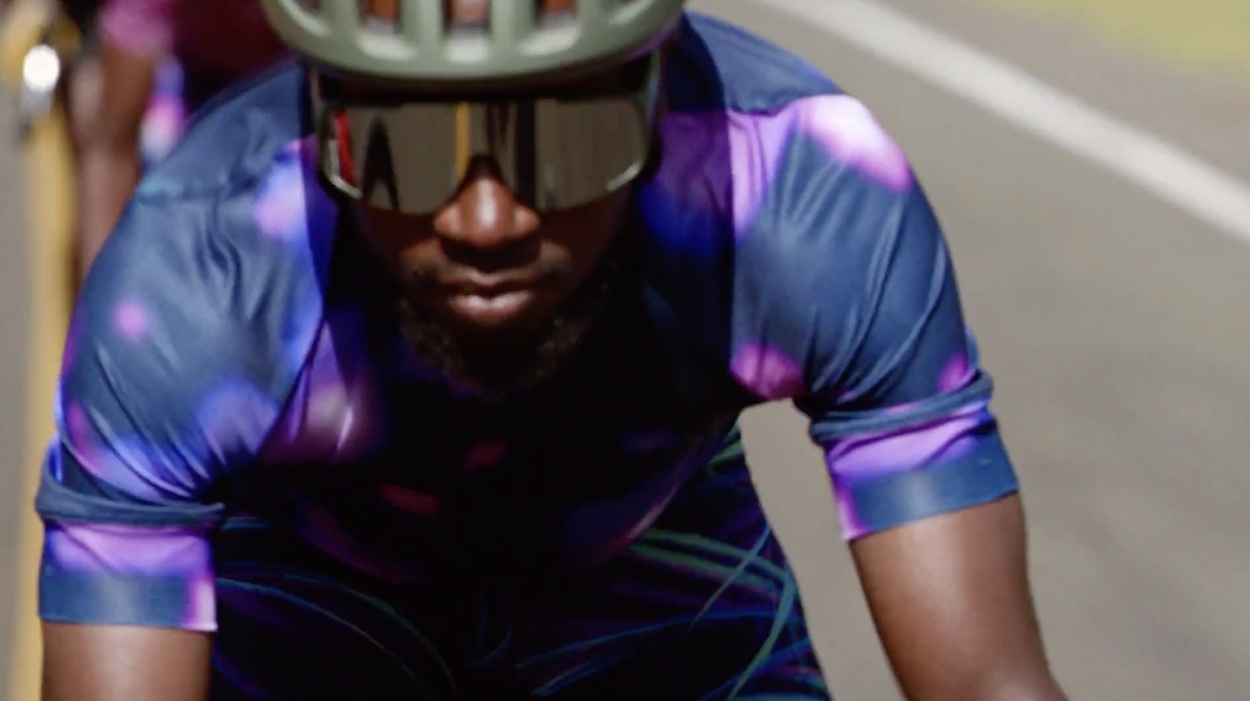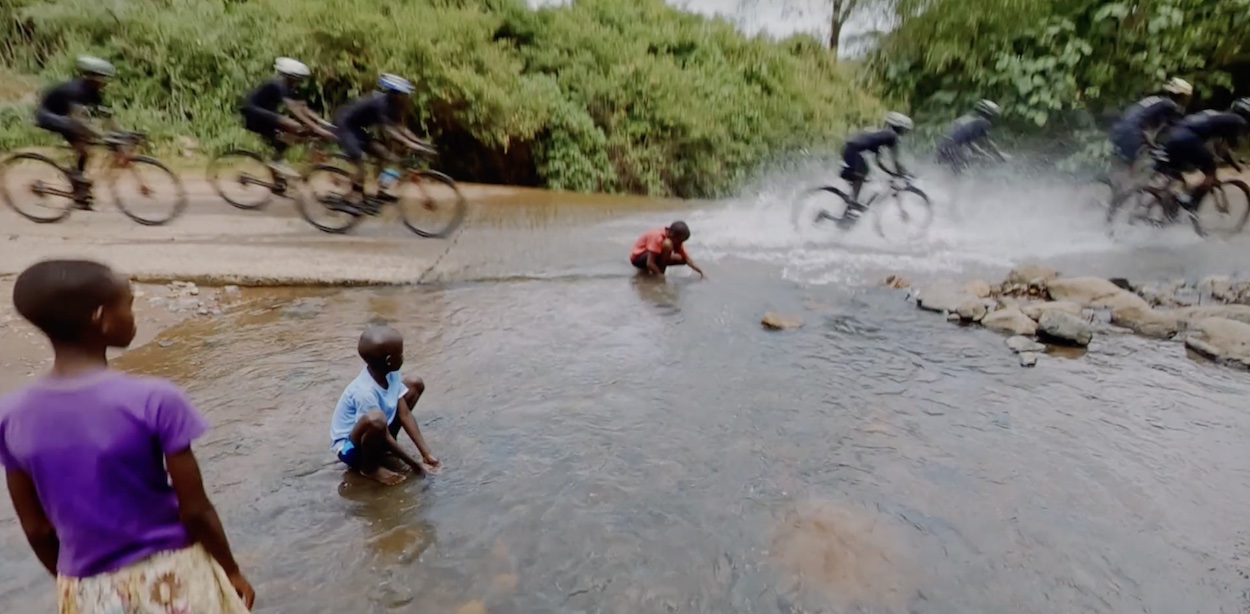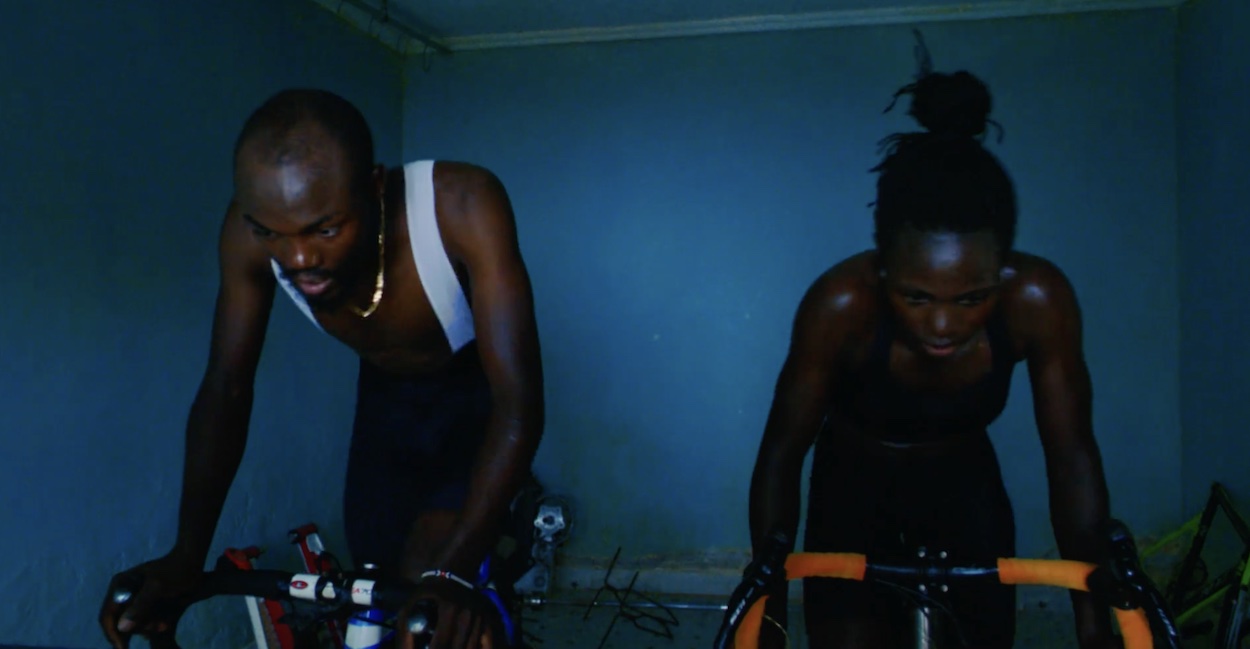ILLIMITÉWORLD: Marleaux and Aus
Let’s dive straight into your origin story – where and how did you first meet, and how did that lead to your ongoing creative collaboration?
MARLEAUX: We met in high school. I knew we had similar friends, but we weren’t cool until, I think, my 11th grade year, and we had sociology class together. We sat next to each other. And, at that time, I was making music. I don’t think either of us was even thinking about film or photography that much, but music was the common thread that brought us together as friends and then as a creative – I guess you could say – partnership. I remember I was rapping at that time. My older brother was a producer and a rapper and, I guess, a mentor for both me and Aus in that era.
One day after school, I recorded a song with Aus, and it was like his first time recording and shit. I recorded his first song, and he directed my first music video, and that’s like the relationship we’ve always had, helping each other grow as artists. I would do my thing, and he was doing his thing, and then we would always circle back collectively. And that’s still how it is today, honestly.
We’re self-taught, it’s like we learn through one another and through the people we work with more than anything else. I did a little bit of film school or art school, whatever you want to call it, when I was 19, and I just remember it didn’t feel like they were actually teaching me anything that I was gonna use. At that time, I was freelancing – directing videos, shooting videos, writing treatments, editing – we were doing every part of the process on our own. And when I would be in class, we’d literally be watching YouTube videos, and I’d be like, “Why am I putting myself into debt to be here when I could get experience right now in real-time?” Shortly after that, I dropped out of college and used that experience to keep doing the things that I wanted to create with my friends and that we wanted to create for the world.
Meta, Amani
Can you tell me a bit about your background and how creativity emerged from the childhoods you grew out of? Your bio says you’re spread between LA, Baltimore, and Paris – why those three cities? Fantasy, reality, and cultural aspiration? Is Paris the fashion hit? And it’s clear you both feed on the energy of traveling and exploring new cities – where does that wanderlust come from, do you think?
MARLEAUX: I’ve always been creative. You know, even when I was a kid, I was really good at drawing and stuff. So, I always had that imagination and that connection with creativity. I don’t want to toot my own horn, but I feel like anything that I put my focus on, I’m gonna do pretty good at it. I was always trying new things. So, it was the same with music and film. It was like, I want to try this, and, you know, the results will show themselves.
AUS: We’ve always been influenced by things outside of America, whether it was fashion or films. In 2016, we took our first trip overseas together – us and some other members of the collective – and we lived in Paris for like a year and some change. That trip shaped some of the tastes that we have today. Travel is a big part of what ILLIMITEWORLD is. Even right now, Marleaux’s on the West Coast. I’m in Italy right now. Even when we’re in separate, distinct places in the world, we’re always connected in some way, always collaborating. And of course, Baltimore is like the nucleus of that, where we all met – Maryland, Howard County, Baltimore – all of that was like the nucleus of that raw energy and that fearlessness that we carry with us. It’s also home, too. And then, you know, LA is where we spread our wings into the industry. So, that’s the kind of significance of Baltimore, Paris, and LA.
MARLEAUX: It’s the three places that gave us the most creative influence and opportunity. Like those places made us, in a sense.
AUS: You know, people always ask us, what were we doing out there [in Paris]? Like, were we working? Were we going to school? I wouldn’t say we weren’t doing anything, but we were really just living our lives. We weren’t there for any particular reason. There was a lot of skating, a lot of verité filmmaking, a lot of music being made. We were living life and just creating every day. But it also was a totally different lifestyle from where we grew up. And we also linked up with a lot of Parisian artists. I feel like the taste level is different there, and it always has been. The best films come out on the other side of the world. So, it was a training ground for our tastes, to be honest.
MARLEAUX: Paris was so important because, honestly, coming from where we are from, people usually stay in a box. And I think it limits your view on what can be done and what is out there. Us leaving where we came from kind of showed us, “Oh shit, bro, we can really do anything we want.” And it was that creative freedom that I think put the battery in our backs, honestly.
AUS: Low key though, that is true, I forgot about that. Low-key was probably the most important thing about the whole trip… like, we were all broke. We weren’t doing what we’re doing now. But off of our craft, we saved up some money shooting music videos, and ended up getting a year lease on a house in Paris. When you have a group of people, it’s like, we can put our minds together with the little money we have and get a house. We can literally do anything. Since then, we’ve never lost that low-key mentality, you know. I feel like we live to the name ILLIMITEWORLD, where we can do really anything.
Steve Lacey, Helmet
Aus – on a couple of your IG posts you talk about the work in terms of painting and describe Marleaux as the only artist you’d share a canvas with, so I’m curious to know how other forms of image making and aesthetics infuse your work? Like for instance your recent video for Steve Lacey feels like it’s dropped straight out of a Prada menswear livestream in terms of the lighting / staging / tonality.
AUS: Me and Marleaux have a telepathic communication because we locked in so early, like before the money, before the clout, before the awards, we were still skating and riding bikes and just having fun with it.
We have this chemistry that I don’t think I would be able to find with anybody else because we locked in at a different point. Now we’re in too deep. I don’t think I would ever co-direct with another person, honestly. But yeah, we just have a synergy that is hard to find.
Some people wish they had a partner, somebody to bounce ideas with. The other day, we wrote a whole music video treatment via text in about 10 minutes, like it was nothing, because we speak the same visual language, but then we each have our own individual strengths. Marleaux is better at certain things than me and vice versa.
What exactly is ILLIMITEWORLD? It’s described as a collective of visual creatives – what does this mean to you guys and what’s the appeal of creating a cluster of talent that’s bigger than the two of you individually? What kind of perspectives and techniques are the other creatives bringing to the collective?
AUS: It goes way back. Bobcat Goldwav is Marleaux’s brother and was a big inspiration to me. I would even go as far as to say that was the real nucleus of ILLIMITEWORLD – like, it was a creative art collective. A lot of people confuse us for a production company or a film group, but it’s really just in the last couple of years that we have been advancing in commercials and stuff like that. It’s like a glacier; the tip of the glacier is the film stuff, and the rest is music. We did music for years and years. I would say, we kind of were in a Wu Tang-type group in high school. It was eight of us, and it was another name similar to ILLIMITEWORLD. And that’s kind of how it started.
And then through just life and shit like that, groups are hard to keep together, everyone has their own lives and different ambition levels. So after a while, it was really just the three of us – it was me, Marleaux, Bobcat, and our homie AU as well on the visual side. That was around the time we were going to Paris. We were still making music, but that’s when it started to become ILLIMITEWORLD and when it was like, “Okay, this is more than just the music.” We never really say how many members there are publicly, but there’s a lot of people affiliated with the collective now, worldwide too.
MARLEAUX: New money makes new friends, you know. We continue to expand.
AUS: We just meet certain people …like our homie, Yeti, he’s not ILLIMITEWORLD, but he’s in the mindset of ILLIMITEWORLD. Some people just get it. We want this thing to be bigger than us, bigger than the founders.
Paris Texas, Bullet Man
You’ve kind of cemented a core recurring creative collaboration with Paris Texas – can you talk a bit about how that came about and what it is about visualising their work and world that offers an interesting space for you both creatively?
AUS: That came through a friend of a friend named Orlando from back home, from DMV, and he knows their [Paris, Texas] manager. They had never put out music or video before, and we met up at our studio in the Arts District. I just tapped Marleaux’s line like, “Yo, you want to work on this?” and that’s how it happened; it was all through a friend of a friend. And I feel like me and Marleaux, we knew the video was going to be hard, but we didn’t know that it was going to have that effect. Like, all the way down to doing this interview, you can probably trace it to us doing that project, which is kind of crazy. But you know, Paris,Texas, they’re really the homies, they’re like our friends now.
Meta, Amani
When I look at the commercials you’ve shot for Google, Meta, Beats and adidas – these kind of feel like passion projects that you would have made regardless of whether there was a brand involved or not. I’m guessing an element of the creative freedom you enjoy when working with brands and through advertising agencies comes from a vocal advocacy on the part of Daniel [Wolfe]? How did you guys come into his orbit and how have you managed to maintain an integrity of purpose and subject matter when working with some of the world’s most well known labels? And how do you feel about lending your creativity out to brands?
AUS: We never were even thinking about shooting commercials. Like, that was the craziest thing. It was never a big thing on our bucket list. We were doing music videos, we were heavy into the music. Daniel from Love Song saw our work, and he saw something in it. And we were like, “Wait, what? You want to shoot commercials? You know, like, our stuff is kind of dark.” I think the advantage we have is that we don’t even look at commercials through the lens of a commercial. I feel like we look at it through just making visual art and that limitation creates innovation. We weren’t trained properly, classically trained in filmmaking, so we go into a commercial treatment the same way as we go into making a music video for Kodak Black, or whoever. It still has a hip hop element to it.
But, I feel our style is so deliberate that that helps us when we create with agencies because if you look at our catalog, we’re not really making Hallmark stuff, you know? So, if you reach out, you kind of already know what you’re getting. The fact that our style is so dialed in helps us.
MARLEAUX: I think the way that we maintain integrity is we only try to work with certain jobs that align with who we are and what we want to see in the world. For example, Sprite just happened to hit us up for the 50th birthday of hip hop. You know, it’s in alignment with who we are as creatives. Same thing for Meta. I don’t rock with the metaverse, but they wanted to tell a story in Africa, so it was in alignment with what we want to put out into the world. A lot of the time, we get a deck sent to us and it doesn’t make sense for us to do it. Someone else could.
AUS: At the end of the day capitalism and advertising is fear based creation and that’s total opposite of what we come from, because I believe fear and making art don’t go in the same room. But sometimes that friction of the commercial world creates beautiful things because you’re forced to be innovative and compromise. So, sometimes it’s a happy marriage, but, like Marleaux said, we just try to select the jobs that align with the soul in some way.
Meta, Amani
You’ve recently been recognised by Saatchi & Saatchi, the British Arrows, the Art Director’s Club etc etc. How do you feel about this sudden collective and simultaneous attention? Advertising seems so secondary to your core creative drive but at the same time it obviously offers you access to a platform of scale that brings your work to a huge audience. And pays bills.
MARLEAUX: I got mixed feelings about it, because it’s like, I’m proud but at the same time, sometimes I don’t even know what’s going on. Like, that’s a whole ‘nother world. But yeah, it’s dope. I mean, it’s just a whole game. If you don’t get the award, it doesn’t mean your shit wasn’t good; it just means the people who are selecting the things didn’t select it. That’s all it means.
AUS: The recognition is dope, especially being two young black artists from where we’re from. We’ve definitely been in a lot of spaces where no one else looked like us or talked like us. That alone is a blessing, you know. It’s also good to be like a beacon of light for other people who might want to take the path that we’re taking. So even, maybe going into that award show and holding that award, even if it doesn’t mean that much [to us], somebody else might be like “damn, it is possible. You know, I can do that.”
Meta, Amani
How do you choose the projects you work on? Or what is it you’re looking for when the opportunity for visual expression lands?
AUS: Budget. [Laughs]. When it comes to commercials, the budget definitely matters, but I feel like we move with creative first. We look at it and know within the first read whether it’s a reach or not, or if it’s for us. Also, it’s the relationship. Like, do I want to get in bed with these people? Because not all money is good money, so sometimes it’s not worth it. Honestly, I feel like when you work on what you want to work on, the right projects just come to you.
What role, if any, does faith play in your work and world view?
MARLEAUX: I’m a student of life, you know, I don’t subscribe to one belief system. But, one thing I guess you can say is a mantra for us is this idea that the world is yours. And I think keeping that thought in the back of our minds always – it empowers you, and it humbles you at the same time, like I can do anything. There’s no limits to what I can do. Sometimes, we’re in places where we’re the only people that look like us. Like no one looks like us, sounds like us, no one talks like us, no one’s like us. We used to say, like, “Oh, no, we don’t belong here, we’re not supposed to be here.” When it’s like, you wouldn’t be here if you didn’t belong here. You remind yourself the world is yours, and it’s like, “Oh, no, it does make sense.”
Interview by Stephen Whelan
INFO:
@illimiteworldtv
@lovesongfilms
Love Song website



